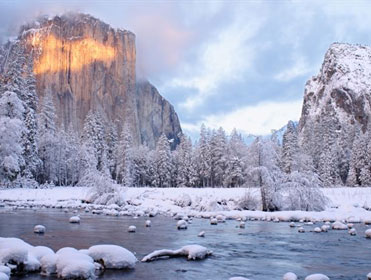Change coming to California's winter weather

Last winter’s bountiful snowfall in the Sierras pulled California out of its four-year drought and provided much-needed water to farms, homes and businesses. This past summer was unusually cool and wet, bringing some changes in the growth pattern of vegetation. So what’s on tap for the coming winter season?
According to Tahoe Weather Geek, we can expect a mixed bag for the state, with a strong possibility of wet weather in the north but a dry year in the south. The big question is, where is the demarcation line, and how much will it affect the Sierra snowpack?
Mt. Shasta is far more likely to see heavy snow than the Sierras in Weather Geek’s long-term outlook. AccuWeather.com agrees that there will be more precip up north, but is prognosticating the storm line near or below Lake Tahoe, giving the Sierras a chance for another good winter. Either way, Southern California is in for a dry spell and the resultant water restrictions. The predictions are all based on a weather phenomenon known as La Nina, which is the polar opposite of last year’s El Nino phenomenon.
El Nino is marked by warmer than normal water in the Pacific that last year translated into active storms in the West and unusually high amounts of precipitation back east. In fact, last winter was referred to as "Snowzilla" along the eastern seaboard. La Nina occurs when cooler than normal waters are observed in the Pacific. This year, La Nina is expected to result in very strong storms ranging from the Pacific Northwest into the upper mid-section of the country, with average snowfall in the northeast, and very dry conditions across the entire southern tier of the U.S..
For skiers, the Pacific Northwest, western Canada and the Rockies look like the places to be this season. Canada had a horrific season last year, but is expected to get its ski mojo back this winter. For the east, it looks like an off and on year for winter precipitation.
It may not be another banner year for snowfall in California, but it doesn’t look like a bust. Storms are likely to be smaller, but colder. The snowpack will once again bear watching.



